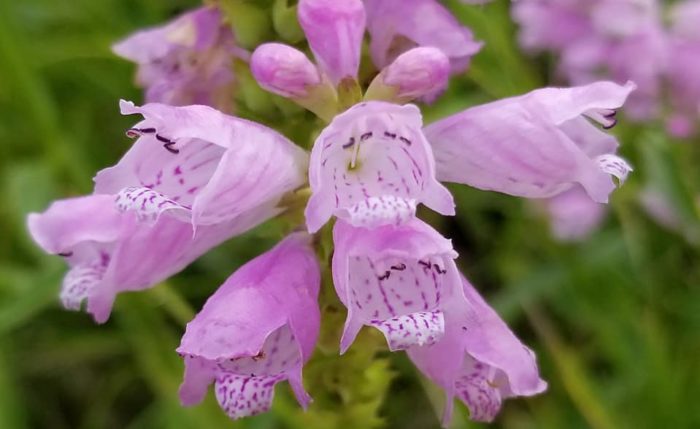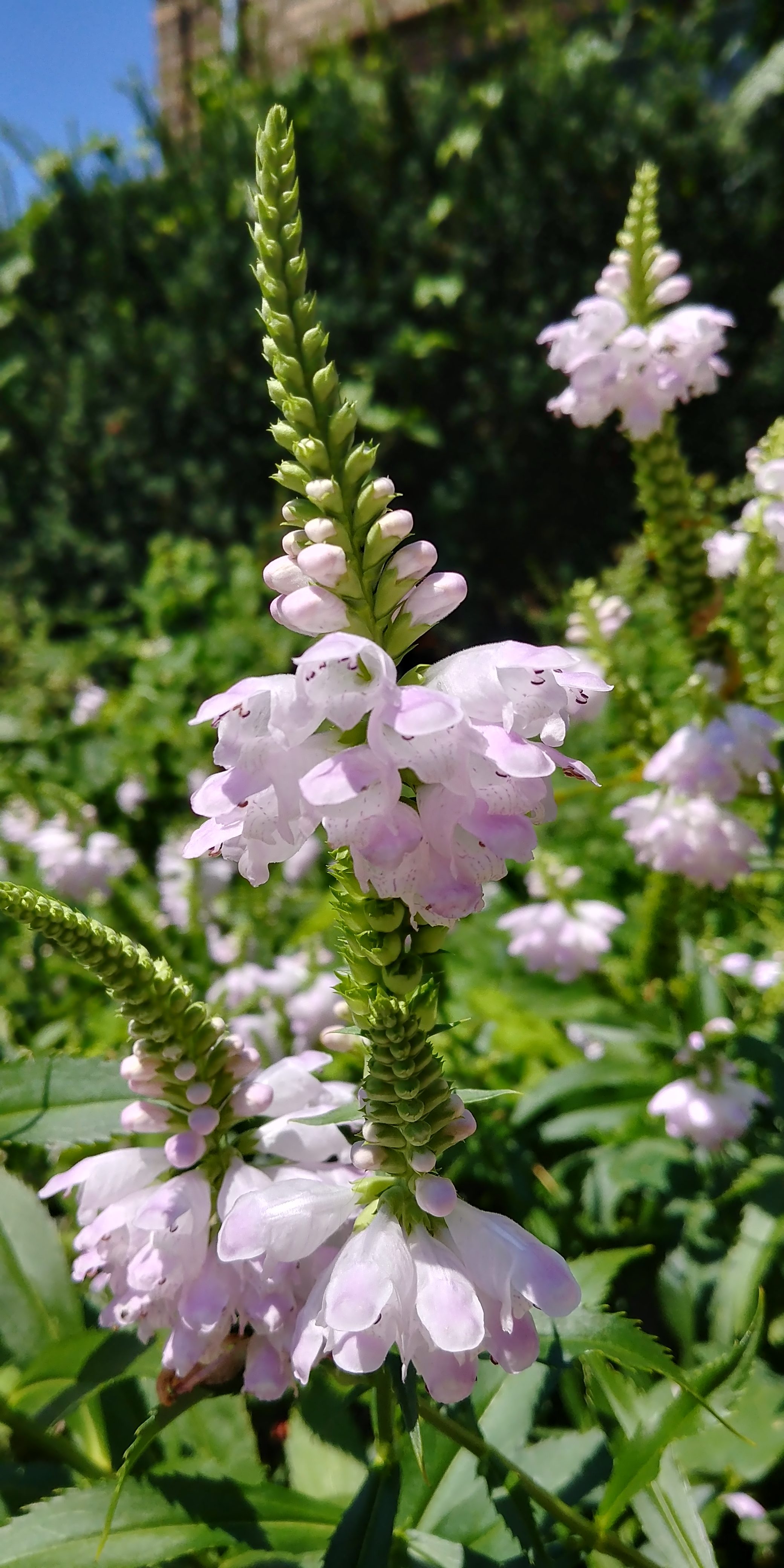Every year I learn to identify new wildflowers, and this week’s featured plant is a recent “discovery.” Obedient plant (Physostegia virginiana) is a member of the mint family that is native to most of North America east of the Rocky Mountains. Its pink, lavender, purple, or white flowers open in the late summer or early fall. Most of the images enclosed below were taken during the month of August.
The Minnesota Wildflowers website explains, “Obedient Plant gets its common name from the fact the individual flowers can be repositioned and will continue to grow that way.” Another common name for this species is false dragonhead, “on account of the fancied resemblance to a European plant by that name,” according to the Illinois Wildflowers site.
The first weekend in August, I pulled over my bike to scan the prairie patch in Colby Park (Windsor Heights). Some pink flowers were hiding among a large group of yellow or gray-headed coneflowers.
More of these plants were nearby. The flowers were blooming from the bottom of the spike up.
A few of the plants had blossoms that were already past their prime.
I wondered whether these wildflowers were native. Jill Kirchner had the same question after photographing this group of obedient plants in Cass County.
Minnesota Wildflowers advises that obedient plant “does well in a home garden, though can become a bit aggressive in moist soil; it is better behaved in drier soils and is easily managed with a bit of hand pulling.” Kim El-Baroudi has a thriving colony in her Polk County yard; most of the plants have paler blossoms.
A top view:
The Illinois Wildflowers site says, “Bumblebees are the most important pollinators of the flowers. Occasionally, other long-tongued bees and the Ruby-Throated Hummingbird may visit the flowers.” I don’t know what kind of insect is on Kim’s plant.
Eileen Miller captioned this picture, “Silver-Spotted Skipper (Epargyreus clarus) on false dragonhead.”
Two more of Eileen’s pictures of obedient plant:
Katie Byerly pulled over on a country road in Worth County to get a closer look at this group of flowers.
Some of the obedient plants had nearly finished blooming.
Others were just starting to flower.
Katie captured some beautiful close views of the blossoms.




















1 Comment
"Native"
Beautiful photos! And it’s always a welcome extra to see insects. I’m pretty sure that’s a bumblebee above the skipper,, and it’s gorgeous.
“Native” is an interesting word in regard to wildflowers. Some nurseries refer to a flower as “native” if it is native to some part of North America. So seeing a “native wildflower” for sale at an Iowa commercial nursery doesn’t necessarily mean that flower is native to Iowa or even the Upper Midwest.
And being “native to Iowa” doesn’t mean the flower is native to the entire state. Some wildflowers are native to eastern Iowa but not western Iowa, etc.
These days, prairie wildflower species that are native to part or all of Iowa and are fairly easy to grow may show up in roadside plantings or in Conservation Reserve Program (CRP) plantings. Thirty years ago, if certain wildflower species were seen in rural Iowa road ditches, there would be good reason to believe they were originally growing on those sites and had not been planted.
Now so many road ditches have been planted that it’s much harder to tell, though certain flower species are almost always original to their sites. Puccoon, for example, is almost never found in seed mixes or plantings.
A few odd plants are showing up in some CRP plantings, especially those planted with inexpensive seed mixes from out of state. Palmer amaranth, a farm weed that causes major problems, made its way into Iowa partly because its seed hitchhiked here in some out-of-state CRP seed mixes. That’s one more reason I believe we Iowans should be raising our own prairie seed for our own plantings, using seed descended from our own original prairie remnants.
PrairieFan Thu 6 Sep 9:05 AM